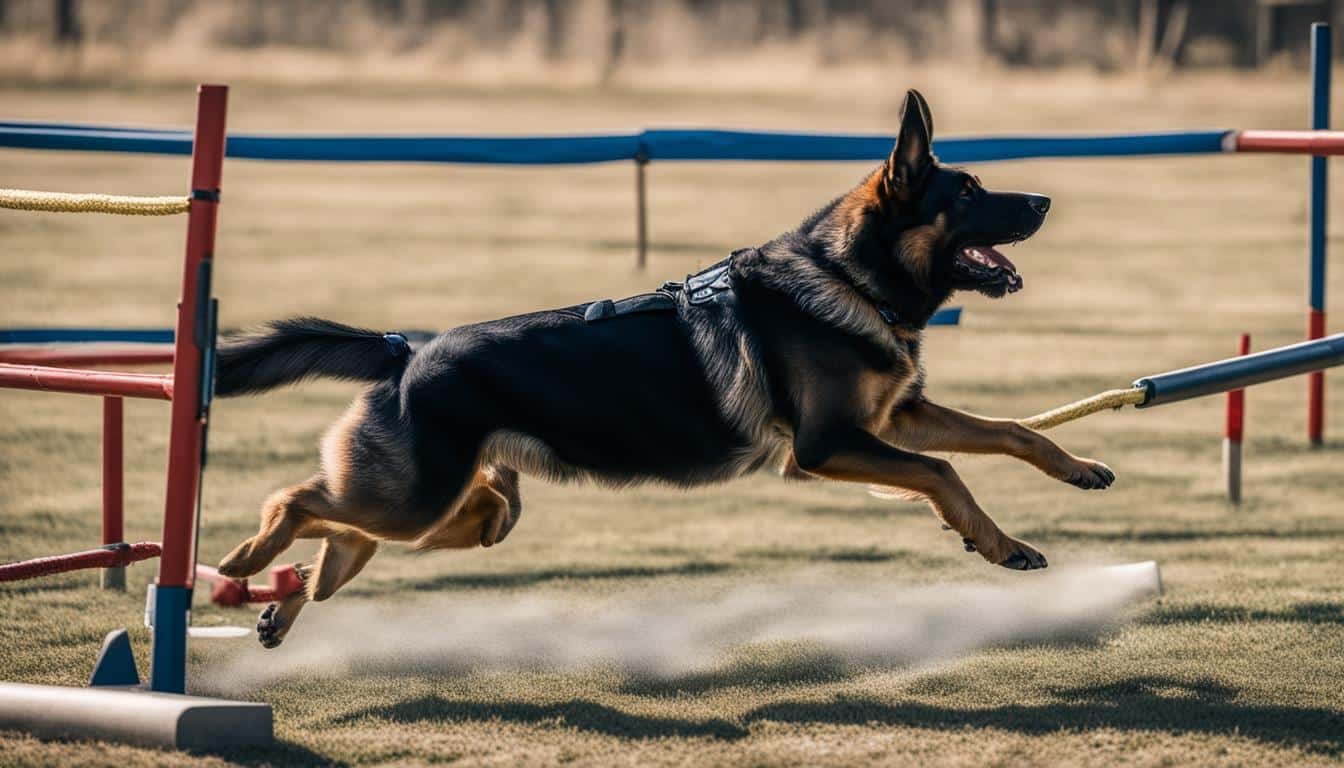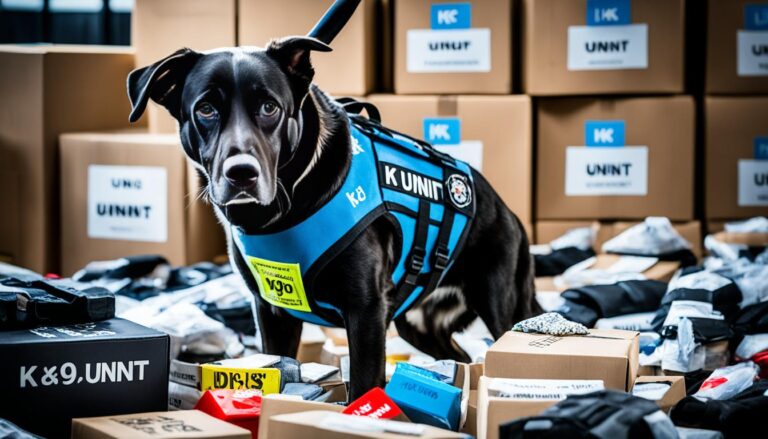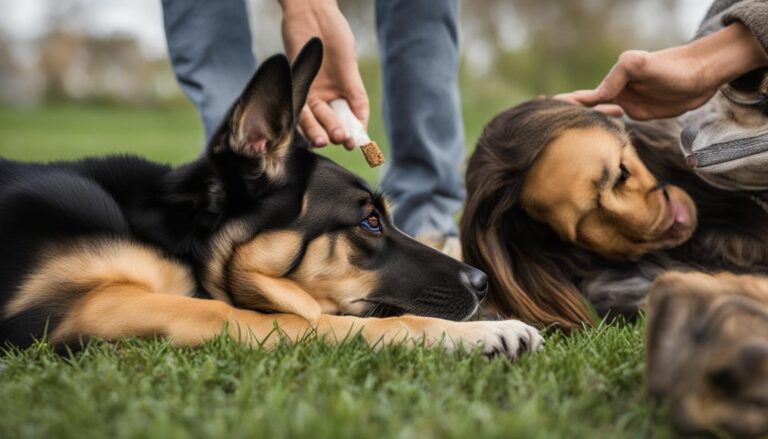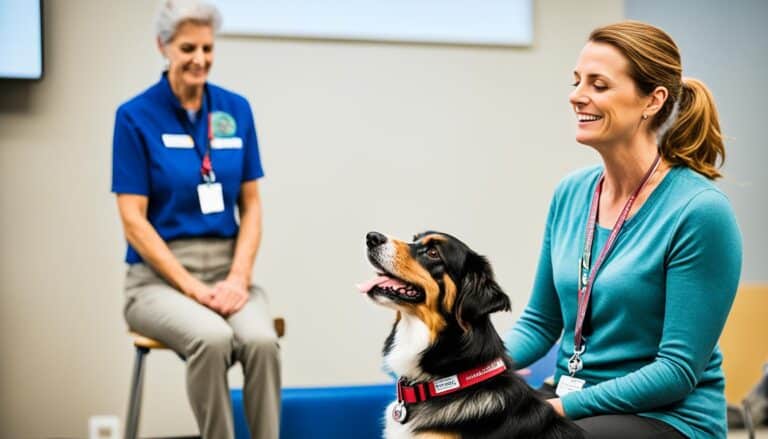How Are Police Dogs Trained
Have you ever wondered how police dogs are trained to perform their important tasks? In this article, we will explore the fascinating world of police dog training techniques and K9 unit training methods. From obedience training to specialized skills like bomb detection and narcotic detection, police dogs undergo extensive training to become reliable and effective members of the force.
Training police dogs involves various methods and disciplines. Dogs can either be trained from scratch or purchased as pre-trained dogs who have already undergone the necessary training. They must pass a normative police test to ensure they meet the required standards.
One of the key components of police dog training is obedience training. Dogs are taught to obey commands without hesitation, ensuring that they can carry out their tasks effectively and safely. This includes maintaining normative standards, shutzhund dog training, tracking training, and K9 tactics.
Simulations of real-world situations are crucial in police dog training. Dogs are exposed to different scenarios to enhance their performance and prepare them for the challenges they may encounter in the field. This includes bomb detection exercises, tracking exercises, and other practical training exercises.
Stay tuned as we delve deeper into the difficulties faced in police dog training, the benefits of K9 training for both dogs and handlers, specialized training for different skills, and the importance of basic obedience training. We will also explore the language and communication aspects of police dog training, as well as the endurance and agility training required for these highly skilled animals.
Difficulties in Police Dog Training
Training police dogs can come with its own set of challenges. Whether it’s the police dog training process, police dog obedience training, or police dog handler training, there can be difficulties to overcome. One common obstacle is when handlers lack sufficient time to train with their dogs or lack the necessary knowledge and skills.
When handlers don’t have enough time to dedicate to training sessions, it can impact the dog’s performance during critical situations. Consistent and regular training is crucial to reinforce obedience and discipline in police dogs. Without proper training, dogs may struggle to follow commands and exhibit appropriate behavior, which could jeopardize their effectiveness in the field.
Communication is key in overcoming these challenges. Handlers should proactively communicate any issues they encounter during training to their personal dog trainers. This ensures that problems can be identified, addressed, and corrected. By working closely with trainers, handlers can enhance their own skills and expertise, ultimately improving the training process and the overall performance of the police dogs they work with.
Narcotic Detection Training for Police Dogs
Police dogs are trained in various specialized tasks, including narcotic detection, human tracking, and finding hidden objects. The training process is rigorous and ensures that the dogs are capable of performing their duties effectively and efficiently. Training for narcotic detection and tracking is of utmost importance, as it plays a vital role in law enforcement operations.
During the training, police dogs are taught to recognize and detect the scent of specific narcotics such as drugs and explosives. This training involves exposing the dogs to different smells and substances to develop their olfactory skills. They learn to differentiate between various odors and indicate the presence of narcotics to their handlers.
In addition, police dogs undergo tracking training, where they are taught to follow a trail left by a person. This skill is valuable in searching for suspects, missing individuals, or evidence at crime scenes. The dogs learn to track scents over different terrains and in various weather conditions.
Training police dogs for scent detection and tracking is a specialized process that requires patience, consistency, and expertise. It is important to note that not all dogs possess the same aptitude for this type of work. Certain breeds are believed to have a stronger sense of smell and are therefore more suitable for scent detection and tracking tasks.
During the training process, police dogs must also pass the police test, which evaluates their control and obedience. This ensures that the dogs can perform their duties effectively while under the full command of their handlers.
Trained K9 police dogs are deployed in various settings such as airports, marine ports, railroads, and metro stations. Their exceptional olfactory and tracking abilities make them an invaluable asset in detecting narcotics, locating suspects, and maintaining public safety.
Training police dogs for scent detection and tracking is a continuous process. Handlers and trainers constantly work to improve the dogs’ skills and maintain their effectiveness in the field. The dedication and hard work put into training these dogs contribute significantly to the success of law enforcement operations.
Key Points:
- Police dogs undergo specialized training for tasks such as narcotic detection and human tracking.
- They are taught to recognize and detect the scent of specific narcotics.
- Tracking training enables them to follow trails left by individuals.
- Training involves exposing the dogs to different smells and substances.
- They must pass the police test, which ensures their control and obedience.
- Trained K9 police dogs are deployed in various settings for effective scent detection and tracking.
Benefits of K9 Training for Dogs
Dogs in K9 training undergo a transformation that brings about numerous benefits for both the dogs and their handlers. Through this specialized training, dogs develop a deeper understanding of their handlers and significantly improve their communication and working abilities.
The training process strengthens the bond between the dog and the handler, creating a strong partnership that enhances their ability to work together effectively. As a result, the dog becomes more reliable and performs at a higher level in various tasks and situations.
One of the key advantages of K9 training is the proper correction of behavior. During training sessions, dogs learn to respond to commands, follow instructions, and exhibit the desired behaviors for their respective duties. This correction ensures that the dogs consistently perform their tasks with precision and obedience.
K9 training also provides dogs with mental stimulation and physical exercise, allowing them to channel their energy and instincts effectively. This not only contributes to their overall well-being but also enhances their performance in the field.
Achieving Agility through Training
One crucial aspect of K9 training is police dog agility training. This specialized training focuses on developing the dog’s physical abilities to navigate different obstacles and terrains effectively. It includes exercises and techniques that improve the dog’s agility, speed, and control.
Agility training enables police dogs to perform tasks such as searching for suspects in challenging environments, pursuing fleeing individuals, and maneuvering through confined spaces. These skills are critical in the line of duty, as they enable dogs to access areas where human officers may face difficulty.
By incorporating agility training into their program, law enforcement agencies ensure that their K9 units are equipped to handle a wide range of scenarios effectively.
The Benefits of K9 Training for Dogs:
- Enhanced understanding of their handlers
- Improved communication and working abilities
- Stronger bond with the handler
- Increased reliability and performance
- Proper behavior correction
- Mental stimulation and physical exercise
- Improved agility and maneuverability
Benefits of K9 Training for Handlers
K9 training offers numerous benefits for handlers, enhancing their abilities to work effectively with their police dogs. Through comprehensive training programs, handlers gain a deeper understanding of their canine partners, allowing them to address behavior problems and improve overall performance.
During the training process, handlers learn essential techniques to overcome challenges that may arise in their work. They develop the skills needed to correct behavioral issues, ensuring that the dogs are well-behaved, obedient, and reliable in high-pressure situations.
The focus of police dog handler training extends beyond basic obedience and includes specialized disciplines essential for their roles. Handlers aim to pass the K9 police test, demonstrating mastery in different areas such as narcotic detection, tracking, and suspect apprehension. This comprehensive training equips handlers with the knowledge and capabilities necessary to excel in their field.
By completing K9 training programs, handlers strengthen their bond with their canine partners, establishing a deeper level of trust and communication. This bond enhances the effectiveness of the handler-dog team, resulting in improved performance during operations and enhanced overall outcomes.
Ultimately, the benefits of K9 training for handlers extend to their role as dog owners. The skills acquired in police dog handler training can be applied to their personal lives, allowing them to better understand and manage their own pet dogs. This transfer of knowledge and expertise improves the overall relationship between handlers and their canine companions.

Benefits of K9 Training for Handlers:
- Enhanced understanding of dogs
- Improved performance and problem-solving abilities
- Successful completion of the K9 police test
- Mastering different disciplines related to police work
- Stronger bond and communication with the dog
- Transferable skills to personal dog ownership
Specialized Training for Different Skills
Different types of police dog training are conducted to develop specific skills required for their duties. Let’s take a closer look at the different training methods and techniques used for various tasks:
1. Patrol Training
In patrol training, police dogs are taught the necessary skills for day-to-day police tasks. This includes obedience training, agility exercises, and crowd control techniques. Dogs are trained to apprehend suspects, provide protection to officers, and search for hidden individuals or objects.
2. Drug Detection Training
Drug detection training focuses on teaching police dogs how to identify narcotics. Dogs are trained to recognize and indicate the presence of drugs such as cocaine, heroin, and marijuana. They learn to search vehicles, buildings, and open spaces to locate illicit substances.
3. Bomb Detection Training
Bomb detection training enables police dogs to locate explosives. Dogs are trained to identify common bomb-making materials and detect the scent of explosives. They are educated on how to search for hidden devices in a variety of environments, including buildings, vehicles, and public spaces.
4. Scent Tracking Training
Scent tracking training equips police dogs with the ability to locate suspects or missing persons. Dogs are trained to follow a specific scent trail, whether it’s from a crime scene or a person’s belongings. They can track scents over various terrains, making them valuable assets in search and rescue operations.
To illustrate the specialized training process, take a look at the image below:
Each type of police dog training presents its own challenges and requires specific techniques to ensure the dogs are efficient and effective in their roles. By providing specialized training, police departments can ensure that their K9 units are well-prepared to handle a wide range of situations.
Importance of Basic Obedience Training
Basic obedience training is a crucial component of police dog training techniques. It plays a vital role in ensuring that police dogs can obey their handler’s commands without hesitation. Through obedience training, these highly skilled canines learn to control their inherent aggression and respond appropriately in various situations.
One of the primary benefits of obedience training is that it helps police dogs acclimate to public places and distractions, such as heavy traffic or crowded areas. This training instills discipline and enables the dogs to remain focused on their tasks, even in challenging environments.
During basic obedience training, police dogs learn essential commands, including sit, stay, down, come, and heel. These commands are the building blocks for more complex tasks and help establish clear communication between the handler and the dog.
Obedience training also strengthens the bond between the police dog and its handler. Through consistent training sessions, trust and mutual understanding develop, resulting in a harmonious working relationship. This bond is crucial for effective teamwork and ensures that the dog follows the handler’s instructions promptly and reliably.
Furthermore, basic obedience training provides a solid foundation for advanced training in specialized areas such as scent detection, tracking, or patrol work. The dog’s ability to demonstrate obedience allows the handler to focus on refining specific skills related to their assigned duties.

Language and Communication in Police Dog Training
When it comes to police dog training, an interesting aspect to consider is the language and communication used during the training process. It is common for dogs in police training to receive commands in a foreign language, such as Dutch or German.
This choice of language is not to prevent accidental commands from others, but rather because these dogs have been specifically trained with those particular command words. The use of a foreign language allows for clear and distinct signals that the dog can easily understand, enhancing their responsiveness to commands and ensuring precision in their actions.
From the handler’s perspective, learning a few foreign words is much simpler than retraining the dog with new commands. By using a consistent set of foreign command words, the officer can effectively communicate with the police dog, reinforcing the training and maintaining the dog’s focus and obedience.
By using a specific language for commands, police dog training techniques can be optimized and fine-tuned to produce the desired outcomes.
Training police dogs in a foreign language is an integral part of the K9 unit training methods. It helps establish a strong bond between the handler and the dog, promoting effective communication and teamwork. When a handler gives a command, the dog reacts swiftly and accurately, carrying out the required tasks with precision.
Language and communication play a crucial role in the success of police dog training, ensuring that these highly skilled canines are well-equipped to perform their duties effectively and protect the community.
Endurance and Agility Training for Police Dogs
Police dogs undergo specialized training to enhance their endurance and agility, enabling them to perform physically demanding tasks. This training ensures they are prepared for the challenges they may face in their line of duty.
During police dog agility training, the dogs are taught to navigate obstacles and overcome various physical barriers. They are trained to jump over walls, climb stairs, and maneuver through challenging terrain. These exercises help them develop the strength, flexibility, and coordination required for their work.
Improving Endurance
Endurance training for police dogs involves gradually increasing the duration and intensity of physical activities. Dogs are taken on long walks, runs, and sometimes even swimming sessions to strengthen their cardiovascular fitness. These exercises improve their stamina, allowing them to work for extended periods without fatigue.
Enhancing Agility
Agility training focuses on improving the dog’s ability to maneuver through various obstacles with speed and precision. They are trained to swiftly change direction, jump over hurdles, crawl through tunnels, and navigate tight spaces. These exercises not only enhance their physical abilities but also sharpen their problem-solving skills.
Training sessions also include simulated scenarios to mimic real-life situations the dogs may encounter. It helps them learn to adapt quickly and make split-second decisions while maintaining control and focus.
The agility and endurance training of police dogs are crucial for their effectiveness in the field. These exercises ensure they can respond swiftly to different situations, chase down suspects, and overcome physical barriers to protect and serve.
Training Sources for Police Dogs
When it comes to training police dogs, there are two primary sources: private training facilities that specialize in this field and the police force itself. Both options offer comprehensive training programs to ensure that these incredible animals are prepared for their important roles in law enforcement.
If you opt for private training facilities, you can expect your police dog to receive top-notch training from experienced professionals. These facilities have a deep understanding of police dog training techniques and K9 unit training methods. They will work closely with your dog to develop their skills in various areas such as obedience, scent detection, tracking, and more.
On the other hand, some police departments have their own in-house training programs. These programs focus on the specific needs and protocols of the department. The advantage of going through the police force’s training program is that the dog will be trained by experienced trainers who are intimately familiar with the department’s requirements and expectations.
No matter the training source you choose, it is crucial to pair your police dog with a skilled handler who has undergone specialized training in handling K9 units. This ensures that the handler knows how to effectively communicate with and manage the dog during operations. After all, the success of a police dog depends not only on their individual training but also on the synergy between the dog and their handler.
Professional trainers emphasize the importance of making training sessions enjoyable for the dogs. Utilizing motivating rewards, such as treats or toys, is a common practice to keep the dogs engaged and enthusiastic throughout the training process. Overworking the dogs should be avoided, as it can lead to exhaustion or burnout.
Consistency is key in police dog training. Establishing a routine and using consistent command words help the dogs understand and respond appropriately. However, trainers also need to provide challenges to keep the dogs progressing and advancing their skills. Training sessions should always end on a successful note, reinforcing positive behavior and achievements.
In conclusion, whether you opt for private training facilities or utilize the resources within the police force, ensuring that police dogs receive proper training from experienced professionals is crucial. The bond between the dog and their handler, combined with effective training techniques, plays a vital role in the success of these remarkable K9 units.






